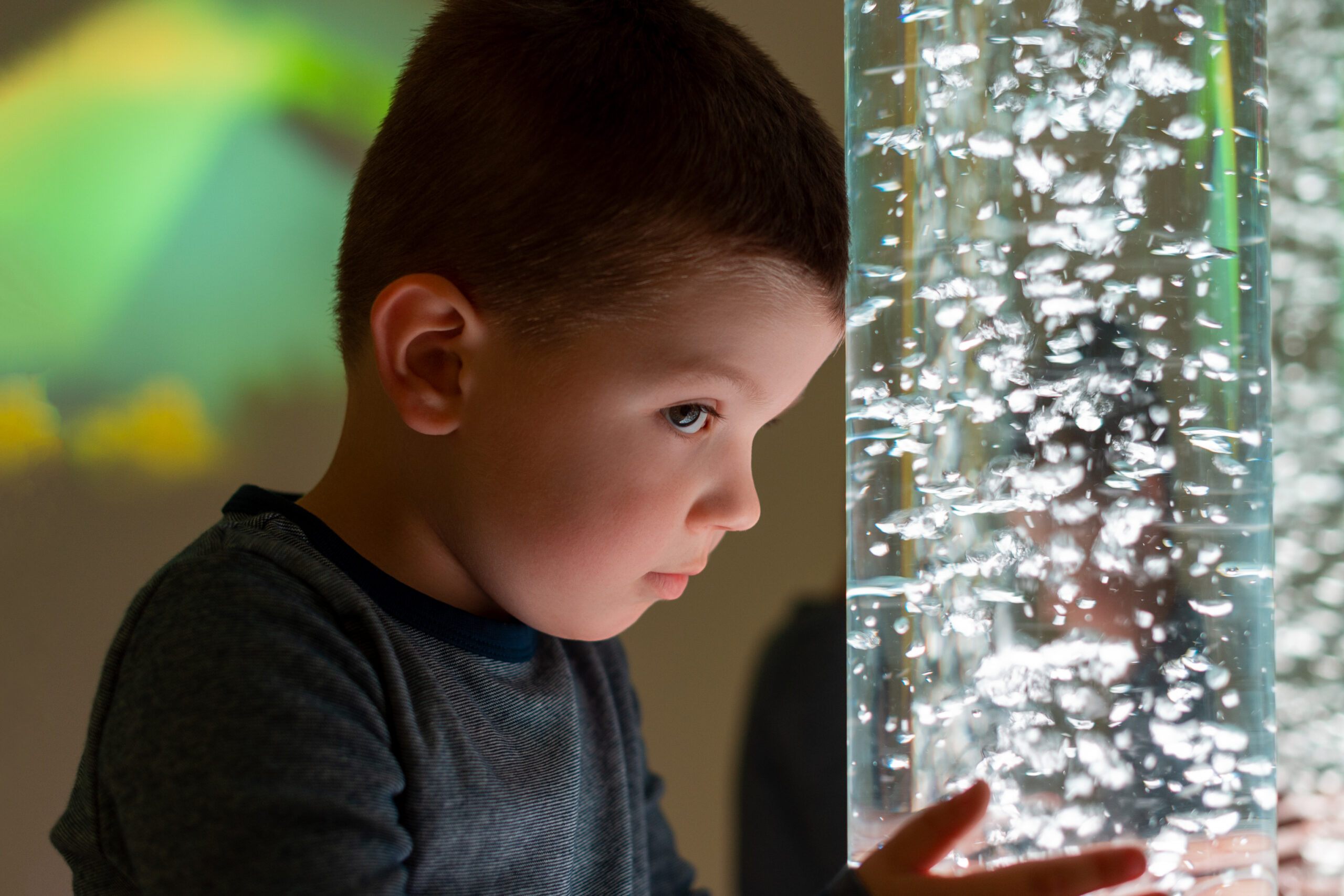By Deborah Lee MS, OTR/L
When children appear to have poor sustained attention to task, they typically attend to an activity for only several seconds before transitioning onto the next activity, and parents often worry that their child may have Attention-Deficit/Hyperactivity Disorder (ADHD). However, what most parents do not realize is that some of the symptoms that fall under ADHD also overlap with the symptoms that fall under Sensory Processing Disorder (SPD). Some of these similar symptoms include inattention, hyperactivity, and impulsivity. SPD and ADHD often go hand in hand. A recent study from the University of Colorado suggests that up to 40% of kids with ADHD also have sensory issues.
You also have to keep in mind that within the early intervention population, children between the ages of 0-3 are young and their brains are continuously developing so naturally, they have poorer attention skills to task than older aged children.
As for a quick review, SPD is a neurological condition in which the brain has difficulty interpreting or responding to the information that we receive through our 8 senses, which are vision, hearing, tactile, taste, smell, proprioception, vestibular, and interoception. Some people may be overly sensitive to certain input within the environment, where they may appear extremely fussy or as if they are in pain. For example, when they hear the “happy birthday” song, they may start to cry and cover their ears until the song has stopped. In contrast, some people may be under-responsive to certain input and they may appear unfazed and relaxed. Children with SPD will demonstrate an inappropriate response to specific sensory stimulations that can affect a variety of skills (i.e., fine motor, gross motor, cognition, play, self-care) needed in their day-to-day life. These inappropriate responses can be targeted and altered during individualized occupational therapy sessions. This is done by providing the children with tailored sensory input based on each child’s need to strengthen the sensory connections in the body and brain, such as going on a swing, going down a slide, running, etc., in order to help them become regulated. Upon receiving these inputs, these children will then demonstrate overall improved attention skills and once regulated will be able to complete tasks successfully.
ADHD is also another complex neurological condition caused by imbalances in the brain that portray inappropriate levels of inattention, hyperactivity, and impulsive behavior. ADHD can be diagnosed as early as four years old but usually between the ages of four through sixteen. As previously mentioned, the symptoms overlap; however, the main difference is that even if you provide these children with sensory input or make a change to their environment, the behaviors and symptoms will most likely be unresolved. In order to determine if your child has ADHD or not, definitely visiting their pediatrician is the first step. These symptoms also must persist for at least six months within at least two settings. For children specifically that would be their home and school environment. Unfortunately, with these children, their social-emotional, academic, and cognition skills, just to name a few, will affect their day-to-day life as well.
Here is an example of differentiating between ADHD or SPD in a 3-year-old boy:
This 3-year-old boy has been receiving in-home occupational therapy services for more than half a year. He resists washing his face with water as well as brushing his teeth. When his mother and therapist attempt to complete the task for him instead, he will panic and scream, as well as run away from his mother as he is extremely avoidant. Aside from his self-care skills, when engaging with toys or an activity, he will attend to the toy for approximately 30 seconds and up to 2 minutes then transition onto the next toy or activity without expressing that he does not want to engage in the current toy anymore or cleaning up after use. There was also another instance when he was engaging in a 2-step obstacle course with his therapist and out of the blue, he ran towards his scooter and began verbalizing how he wants to ride his scooter but that it was broken. His mother expressed that she was concerned if he had ADHD or not; however, after several sessions of providing him with vestibular, proprioceptive, and tactile sensory input (i.e., obstacle courses, animal walks, playdoh, finger painting), you could evidently see that he became more regulated and was more open to willingly engage in his hygiene tasks without demonstrating adverse reactions. Through this observation and experience, the mother was informed that he appears to have sensory processing challenges more than ADHD; however, with age if she continues to see ADHD like symptoms persisting, she can visit his pediatrician for a consult
All in all, to determine whether your child may have ADHD or SPD, observing them in various stimulating environments, with lights, sounds, textures, etc., while also providing them with the just-right balance of necessary sensory input, will help parents determine if their child’s behavior and symptoms closely align with either medical condition. If you feel that your child may have Sensory Processing Disorder or has ADHD with sensory issues, an occupational therapy evaluation may be necessary.




